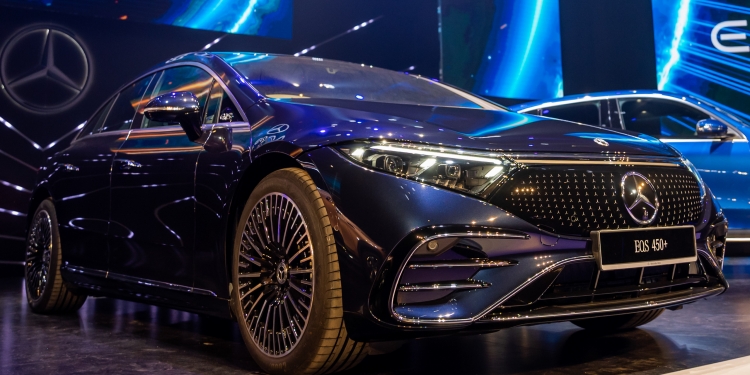Having introduced its first electric vehicle, the EQA, in March, Mercedes-Benz Malaysia has now fleshed out its EQ range of EVs with not one, but three new models. Here, we’re looking at the largest and most important of these, the EQS. This is Stuttgart’s new flagship, occupying broadly the same segment as the S-Class, and unlike its other siblings, it’s built on a bespoke electric platform.
Mercedes-Benz EQS Malaysia pricing and availability

The EQS is available in a single variant, the EQS 450+, fully imported from Germany and priced at RM698,888 without insurance and with the sales and service tax (SST). As with other Mercedes models, a four-year, unlimited-mileage warranty comes with every purchase, but what’s new is a ten-year/250,000 km battery warranty, as reported by paultan.org.
This pricing makes the car RM10,000 less expensive than the W223 S-Class, which is offered in plug-in hybrid S 580 e form and retails at RM708,888. The latter is bigger, offers more power and torque and obviously doesn’t come with the possible range anxiety of the EQS – even if you do have to charge it for the best experience.
Power output and charging

The EQS 450+ technically sits near the bottom of the global EQS range, although it’s not slow – not when the single rear electric motor produces 328 hp and 565 Nm of torque. So equipped, the car sprints from zero to 100 km/h in 5.1 seconds on its way to an electronically-limited top speed of 180 km/h.
The ‘plus’ in the name refers to its extended range – the car has the larger of the two battery sizes available, at a massive 107.8 kWh. This enables an impressive WLTP-rated combined range of between 631 and 782 km. Given our hot climate and the fact that the car we get is well equipped and rides on the largest available 21-inch wheels, expect the actual range to be on the lower end of the range, which is still very good.
So what’s the trade-off? Well, apart from being two bags of rice shy of 2.5 tonnes, the EQS takes achingly long to charge from 10 to 100% using an 11 kW AC wallbox, at ten hours. Thankfully, the car can also accept up to 200 kW of DC fast charging power, which can fill the battery up from 10 to 80% in 31 minutes. Drivers can adjust the level of regenerative braking through paddles on the steering wheel, feeding up to 290 kW back to the battery.
All this is suspended using Airmatic air springs and adaptive dampers, while rear-wheel steering aids agility and manoeuvrability. The latter is the tamer system, however, turning the wheels 4.5 degrees instead of the eyebrow-raising ten degrees available elsewhere.
New EVA platform, one-box design
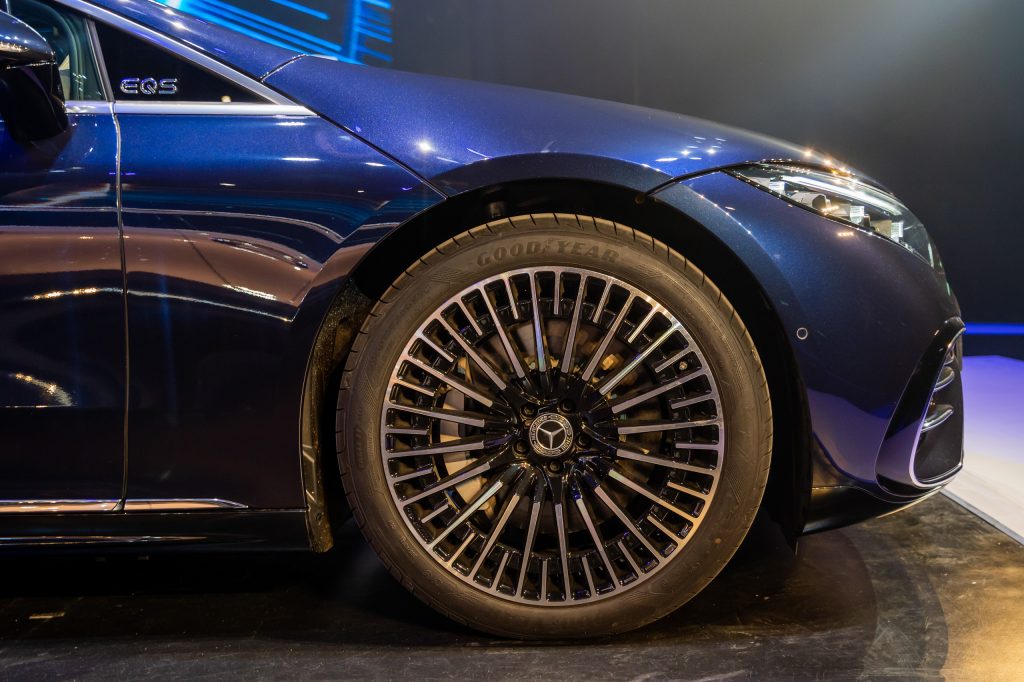
Whereas the EQA, EQB and EQC are based on the petrol-powered GLA, GLB and GLC respectively, the EQS rides on a new Electric Vehicle Architecture (EVA), which also underpins the EQE and EQS SUV – neither of which have been launched in Malaysia yet.
These cars all share the same look, with a blacked-out front end incorporating a blanked-off grille and a full-width headlight graphic, a one-box profile with a sweeping roofline, flush door handles and another set of full-width lamps at the rear. Thanks to the sleek – if rather featureless – design and flat underbody, the EQS delivers a record aerodynamic drag coefficient figure of 0.20, helping it achieve its range figure.
Malaysian models come with the Digital Light LED headlamps, which uses micro-mirrors to give the high beams an effective resolution of 1.3 megapixels, enabling it to better block out other road users to prevent dazzling them. Also fitted is the sportier AMG Line package and a Three-pointed Star motif on the grille.
Measuring 5,216 mm long, the EQS sits between the standard- and long-wheelbase S-Class in terms of length, but its 3,210 mm wheelbase is just six millimetres shy of the LWB model. Pop the hands-free powered tailgate and you’ll find a capacious 610 litres of luggage space. No front boot underneath the stubby bonnet, however.
MBUX Hyperscreen dominates interior
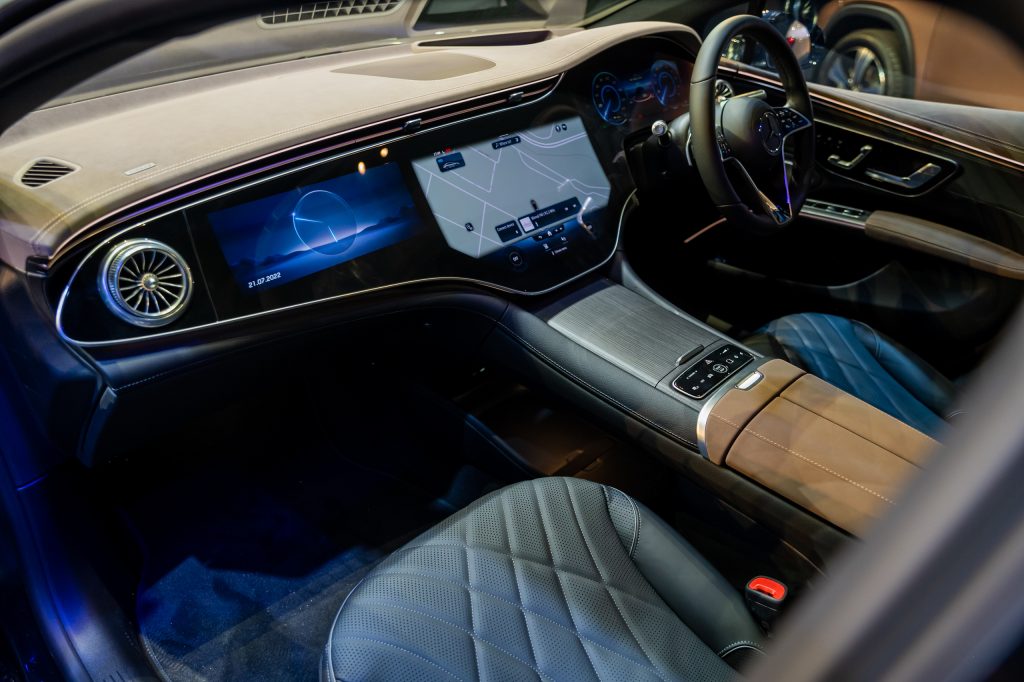
Step inside (we unfortunately do not get the power opening and closing doors available in other markets) and you’re greeted with no less than five screens. Dominating proceedings is the giant Hyperscreen that spans the width of the dashboard and forms part of the updated Mercedes-Benz User Experience (MBUX), consisting of a 12.3-inch instrument display and 17.7-inch centre and 12.3-inch front passenger OLED touchscreens. All three are covered by a single piece of glass.
The centre and front passenger screens offer haptic feedback and pressure-sensitive touch input, similar to Apple’s defunct 3D Touch. To prevent the driver from getting distracted, the car uses a camera to detect if they are looking at the passenger display and dims it if certain content is playing. The revised MBUX interface features a “zero-layer” design to reduce the number of taps required to get to any function and offers predictive suggestions, while the “Hey Mercedes” voice control can now recognise different voices.
But what about those at the rear? This is an S-Class-level car, after all, so passengers at the back get two 11.6-inch displays and two wireless headphones, as well as an Android tablet for controlling various functions. There are also Qi wireless chargers at the front and back, and everyone gets treated to a 15-speaker, 710-watt Burmester 3D surround sound system.
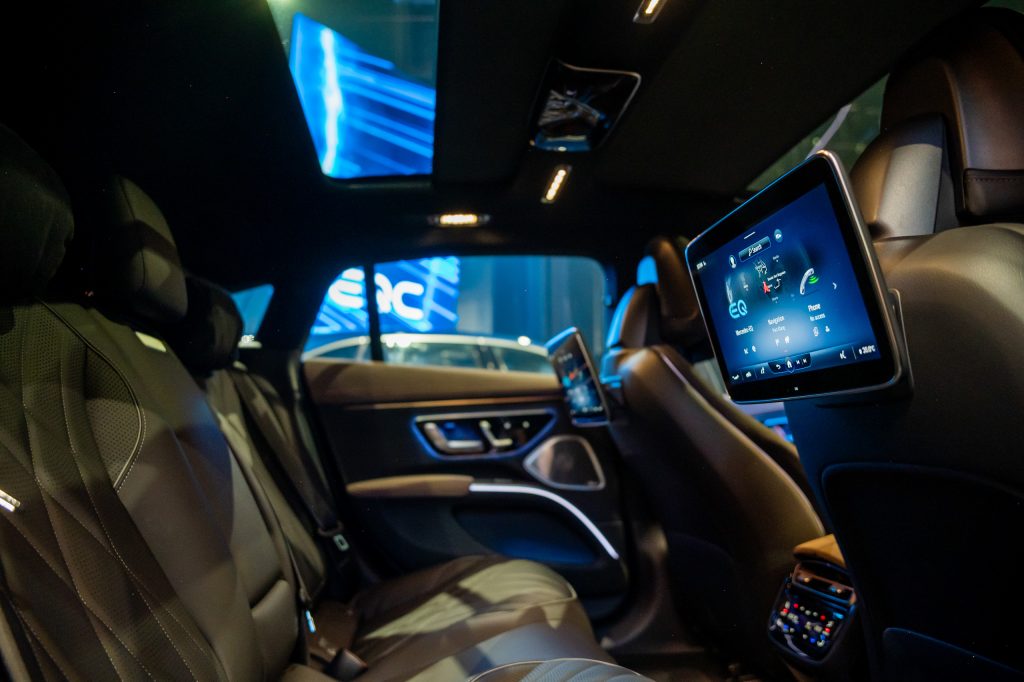
Like the W223 S-Class, the EQS gets active ambient lighting, which consists of around 190 LEDs. It’s bright enough to be seen in daylight and can also be used as a collision or door opening warning – and like other Mercedes models, there are 64 colours to choose from.
Occupants rest their posteriors on power-adjustable front (with memory) and rear seats, upholstered in plush black Nappa leather – matched with Balao brown leather on the dash and armrests and black lime wood trim – and coming with heating and ventilation. Other amenities include keyless entry, push-button start, four-zone climate control and a panoramic sunroof. Oddly for what is supposed to be a limo, however, there are no sunshades anywhere, manual or powered.
Full suite of driver assistance systems
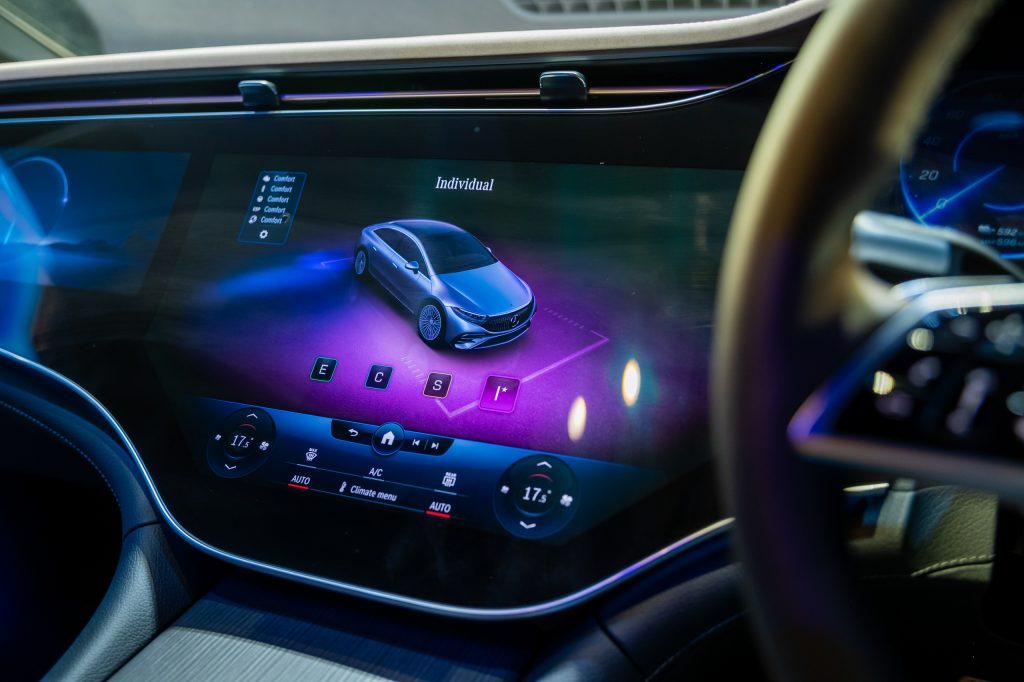
Safety-wise, the EQS is chock full of the latest driver assistance systems from Mercedes. The Driving Assistance Package Plus throws on Distronic adaptive cruise control and lane centring assist for Level 2 semi-autonomous driving, along with evasive steering assist and blind spot monitoring. This is in addition to the standard autonomous emergency braking and lane keeping assist.
There’s also Pre-Safe Impulse Side that uses the air suspension to raise the side of the car if it senses an impending side collision, providing better crash protection. Park assist, a 360-degree camera system, seven airbags and rear belt bags to prevent submaring are fitted as standard.
How does this compare to the BMW i7?
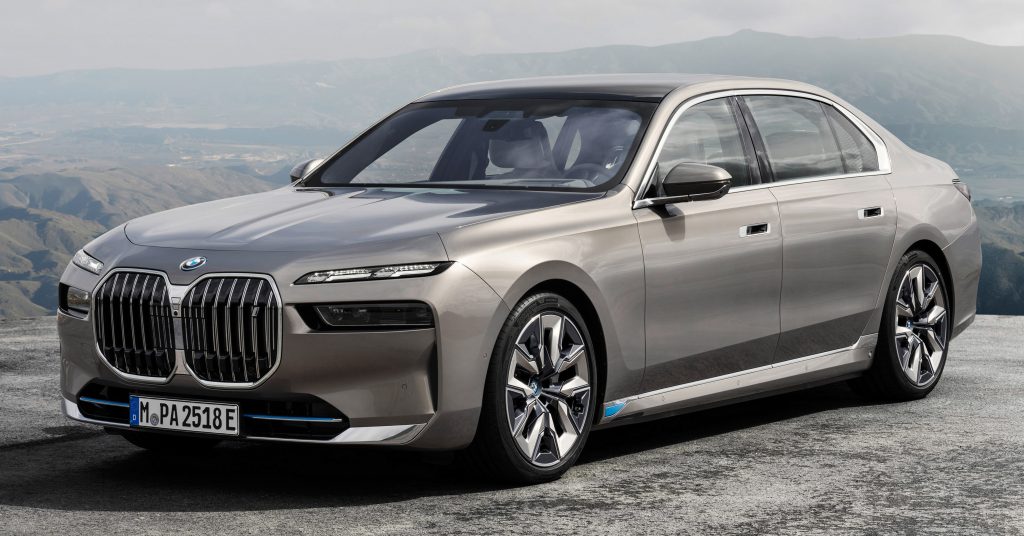
The natural rival to the Mercedes EQS is of course the electric version of the BMW 7 Series, the i7. While BMW Malaysia has yet to launch the car here, it has opened registrations of interest on its website, so expect the Bavarian limo to arrive within the next few months.
The i7 is currently only available in its most powerful variant, the xDrive60. With all-wheel drive, 536 hp and 745 Nm of torque, it monsters the EQS 450+, taking nearly half a second out of the zero-to-100 km/h time (4.7 seconds). It will likely be much more expensive than the Mercedes, however, and it will also offer less range to boot – with a smaller 101.7 kWh battery, the i7 musters a maximum of 625 km on a single charge. An eventual lower-powered variant is a more likely candidate for comparison.
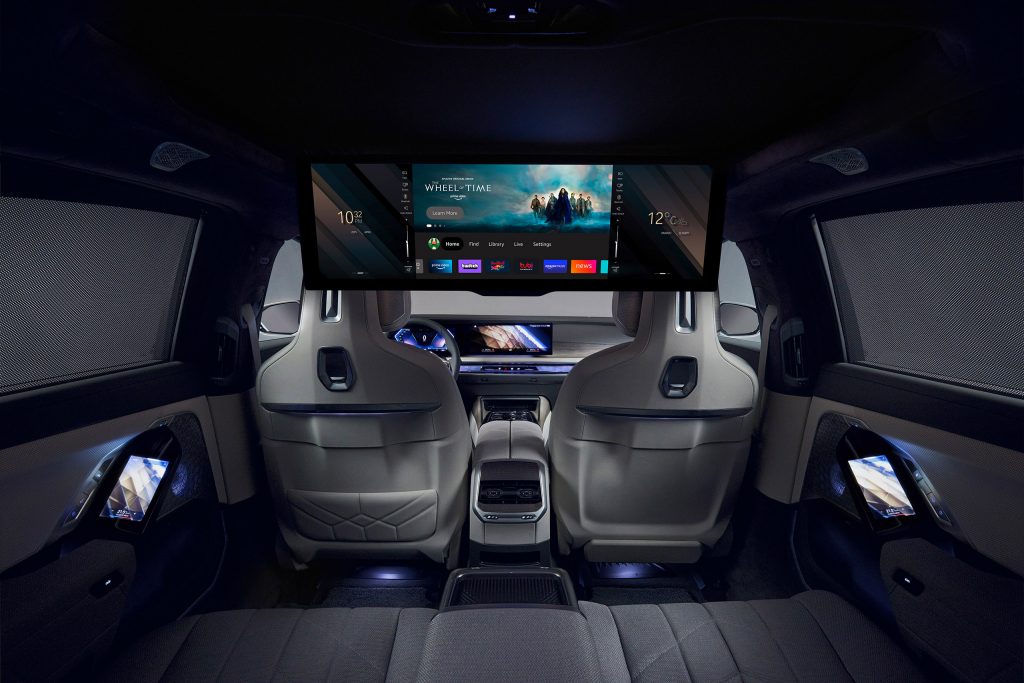
As it’s based on the new G70 7 Series, the i7 also has a more conventional sedan design – if you ignore the controversial split headlights and giant double kidney nostrils, obviously. Inside, you get the new BMW Curved Display with a 14.9-inch centre touchscreen, along with hidden air vents and a new illuminated Interaction Bar on the dashboard and door cards. But the headline-grabbing feature is the giant 31.3-inch 8K BMW Theatre Screen at the rear that folds down from the roof, replete with a built-in Amazon Fire TV.
It remains to be seen if luxury buyers would be tempted by big screens at the front or the back of the car. The i7’s more conventional limo-like roominess and amenities will likely tempt towkays away from the EQS, although the BMW’s polarising design may scare off this market’s more conservative customers. That’s if those looking for a business class cabin on wheels would even consider an electric vehicle in the first place. Time will tell, but the battle between these two industry titans will be interesting to say the least.
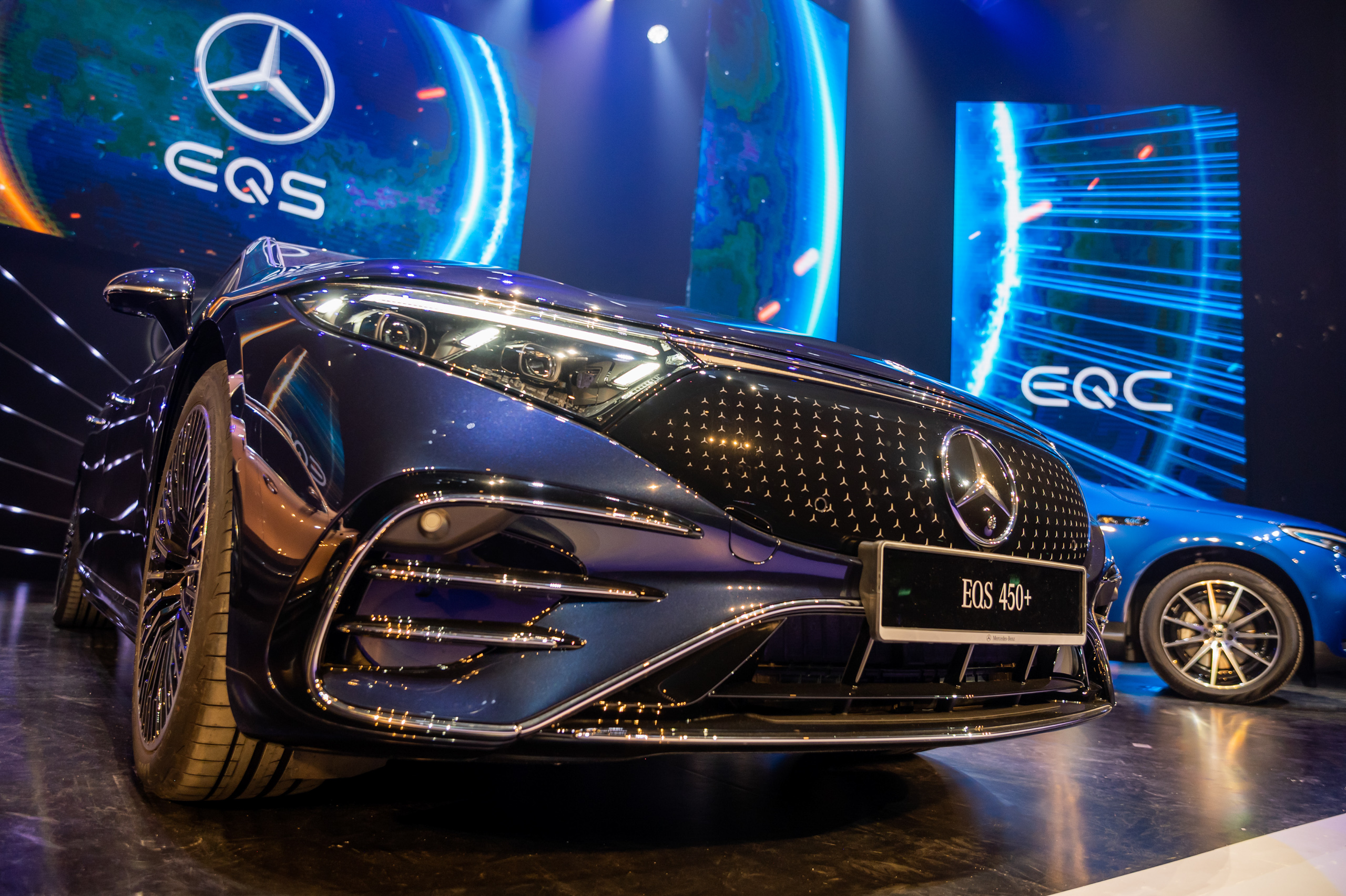

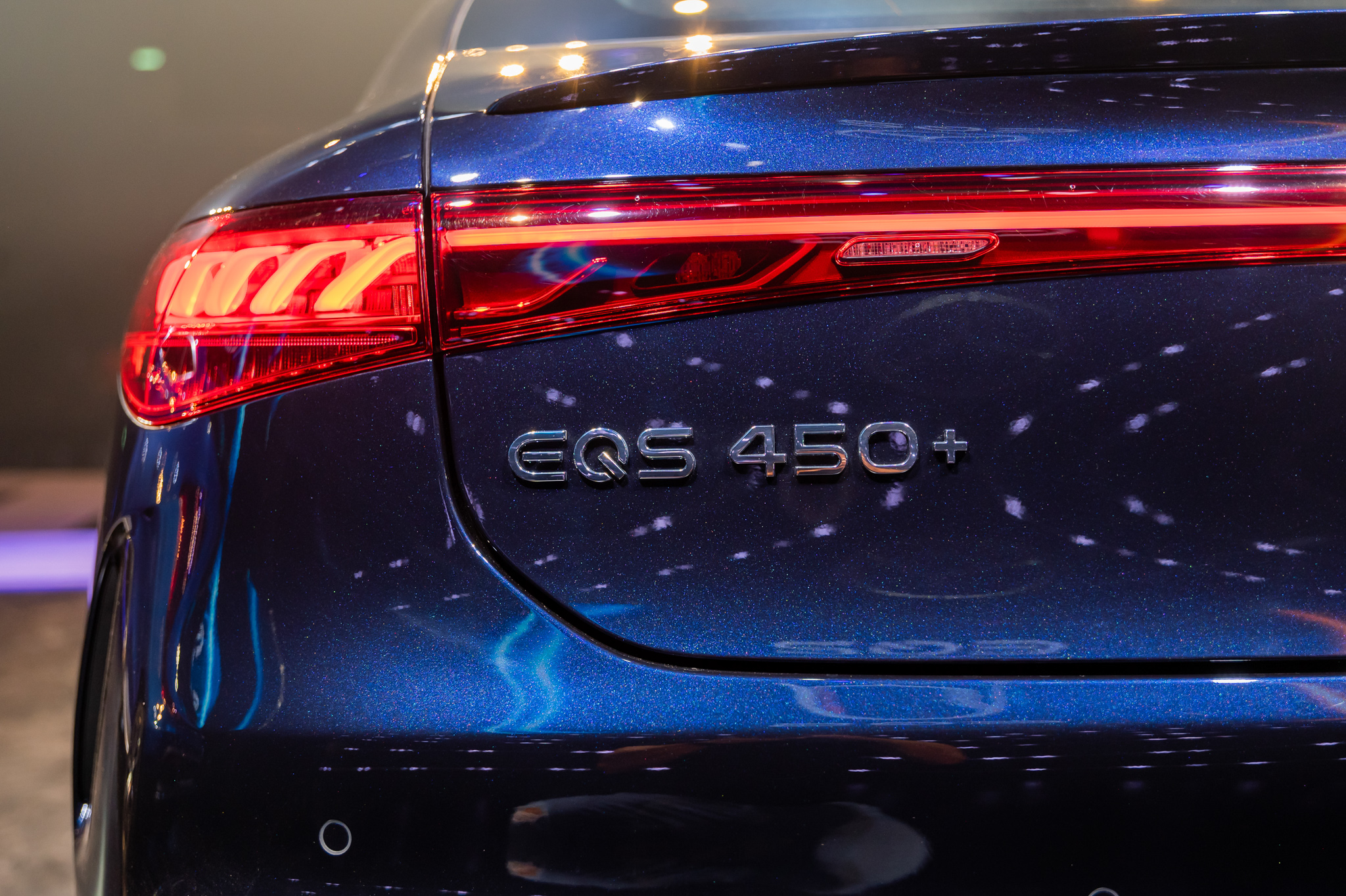
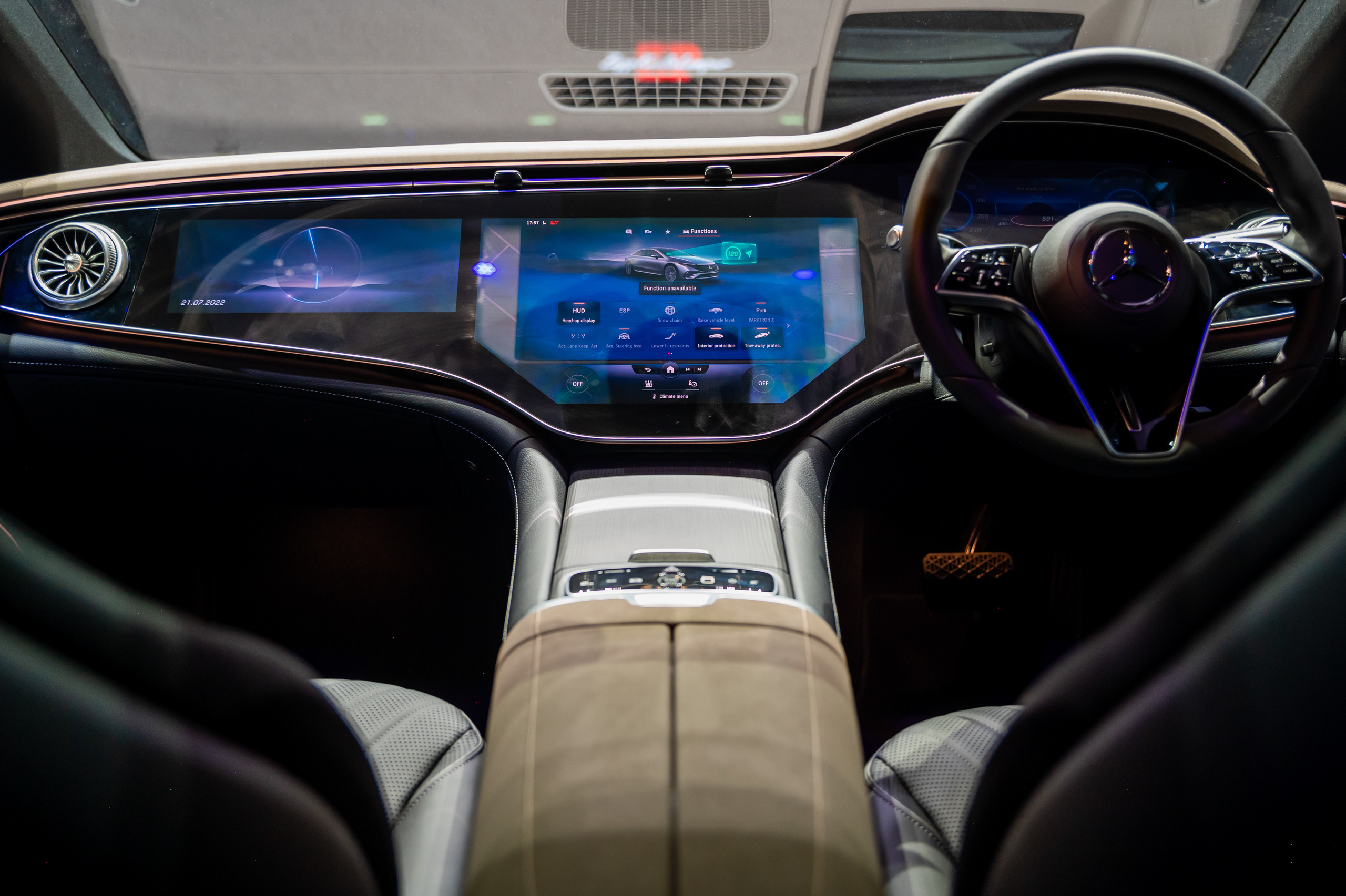
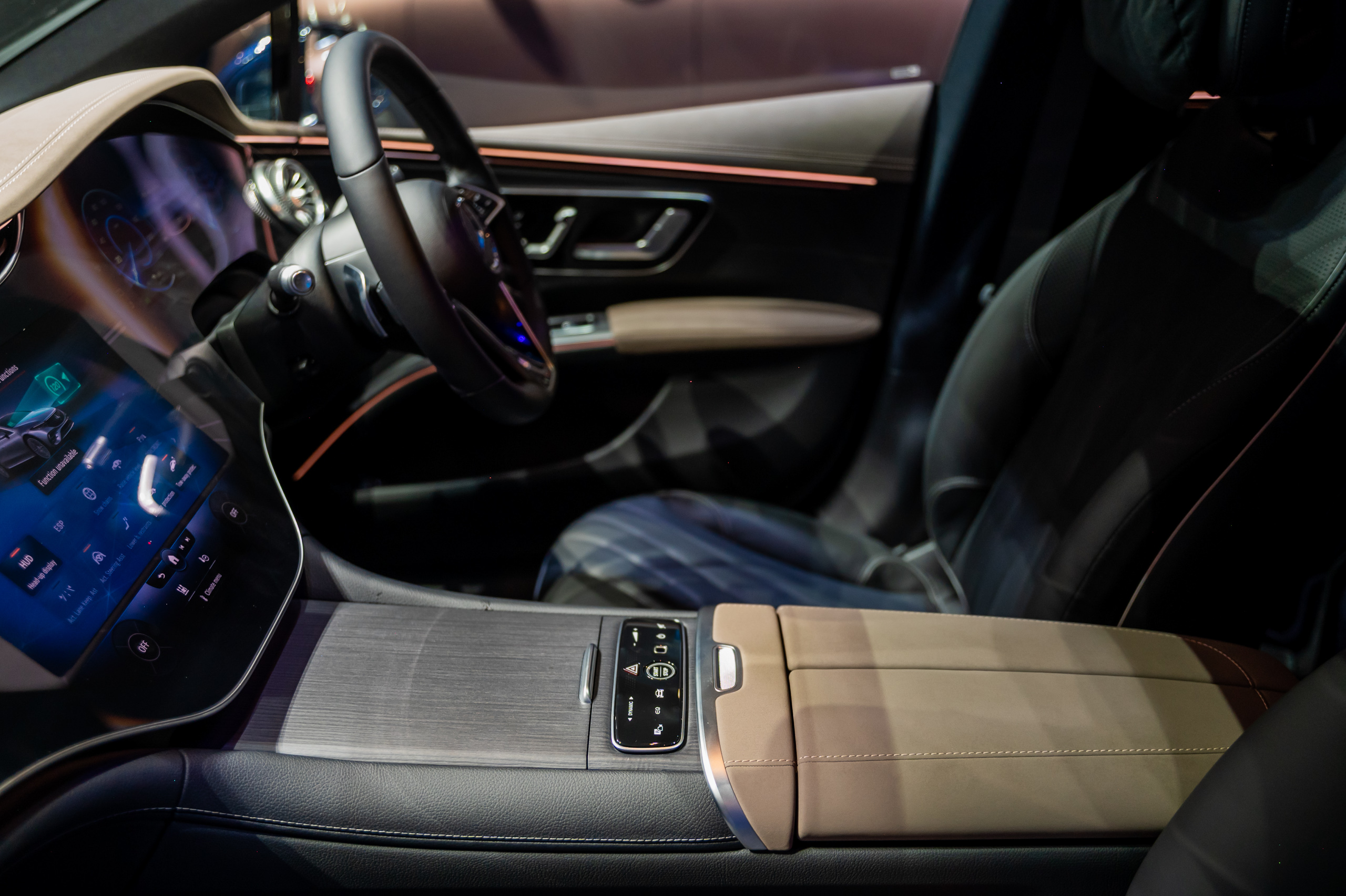
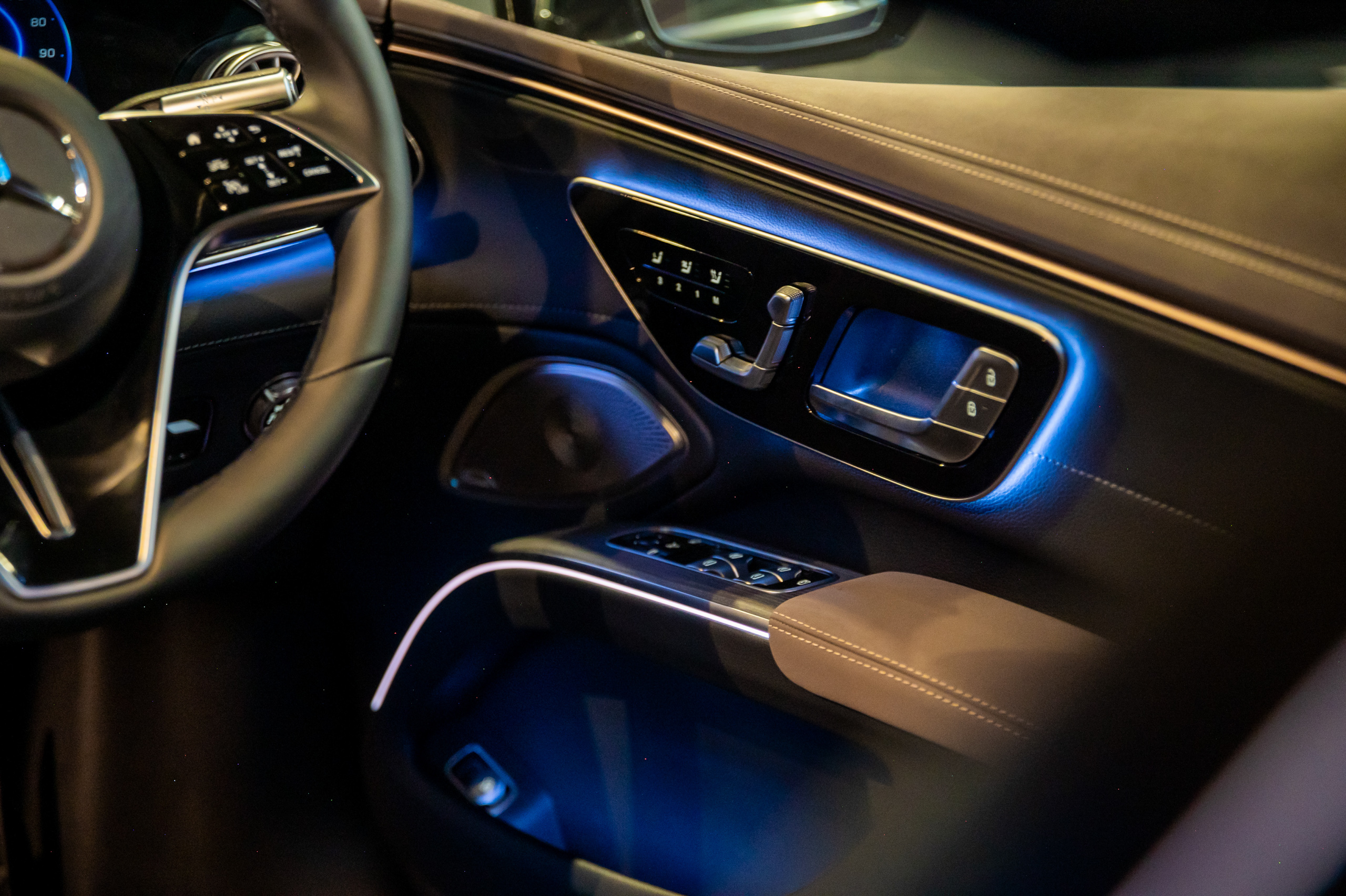
So, what do you think of the new Mercedes-Benz EQS 450+? Would you get one, or would you spend your 700Gs on a regular luxury limousine? Sound off in the comments below.

